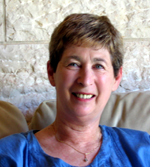By Dorothea Shefer-Vanson

MEVASSERET ZION, Israel — Psychologists and psychiatrists have defined the outburst of mystical ecstasy and identification with our ancient city as a known phenomenon that sometimes even requires hospitalization or sedation of the person affected. It has a distant echo in the sense of awe that occasionally envelops visitors to Florence, but no other place on earth arouses so much and such intense emotional, religious and historic attachment as Jerusalem.
Throughout recorded history Jerusalem has been the subject of longing and reverence, first by the exiled Hebrews, then by the defeated Crusaders, and eventually by the entire Christian world. The Muslims also claim a stake in what they claim is their third holiest site. Jewish prayers repeatedly cite the sanctity of Jerusalem, the requiem mass of the Catholic faith mentions Jerusalem, the prayers of the Protestant religion refer to Jerusalem, musicians from twelfth century monks to contemporary composers have written music extolling its beauty and bewailing its loss, and even the painters of the Renaissance tried to depict it (but actually painted Tuscan landscapes).
I have lived in or just outside Jerusalem for the best part of my life, namely, the last fifty years, and have seen it grow from a dusty backwater to a vibrant metropolis, incorporating religions, nationalities and ethnicities in a glorious and colorful mix. There is no denying that it has a magical beauty, whether because of its location amidst the Jerusalem hills, its limestone buildings that glow in the setting sun or its benign climate – not as hot and humid as Tel-Aviv in summer though somewhat colder in winter. But even in winter Jerusalem has a haunting beauty of its own, and the crisp days of cool sun are a true delight.
I still have a vivid memory of how, during the Six Day War of 1967, I heard shells falling and exploding around me, automatic fire not far from my home and planes roaring overhead. For a few days we did not know how it would all end, but luckily for me and mine, it ended well, when the barriers between the two halves of Jerusalem came tumbling down and the free flow of people and goods in both directions was the surprising outcome. The euphoria of those weeks and months exploded in the excitement of discovering a whole new world of sights, sounds, flavours and humanity on our very doorstep.
In recent years, however, Jerusalem Day, the day that commemorates that event has been hijacked by certain elements. It has become a festival in its own right, with prayers and ceremonies that leave much of the Jewish population unmoved and even hostile. Thus, the restrained pleasure in being able to stroll from one part of the city to the other that was once in evidence is no more, or at least not on that day. For the segment of the population that marks the unification of the city with prayers and ceremonies this also means doing everything in its power to show everyone who’s the boss now, to proclaim Israel’s predominance over every stone and piece of rubble where Palestinians live and to brandish flags and rub their noses into the new state of affairs.
How did it happen that what was once a place where it was a pleasure to live, where different cultures and civilizations, both old and new, could live side by side, tolerating one another’s religion and beliefs, respecting one another’s traditions, has become a place of enmity and hostility, with security a paramount consideration requiring almost unending resources and manpower? Would matters have been otherwise had the Jewish population of Jerusalem displayed greater consideration for the feelings of the other side? That is one of the great imponderables of our time. What is certain, however, is that demonstrating our sovereignty in a vociferous and provocative way hasn’t helped to foster cooperation and coexistence.
Throughout the ages innumerable victims have been slain in the battles to obtain control of Jerusalem, and that, perhaps, is what lies behind the current need to proclaim that it is now in Israeli hands. But perhaps that is what the Jerusalem Syndrome is all about. What is certain is that there can never be peace and harmony as long as one side aspires to grind the other one into the dust.
*
Shefer-Vanson is an author and freelance writer who resides in the Jerusalem suburb of Mevasseret Zion. You may comment to her at dorothea.shefer@sdjewishworld.com, or post your comment on this website provided that the rules below are observed.
__________________________________________________________________
Care to comment? We require the following information on any letter for publication: 1) Your full name 2) Your city and state (or country) of residence. Letters lacking such information will be automatically deleted. San Diego Jewish World is intended as a forum for the entire Jewish community, whatever your political leanings. Letters may be posted below provided they are responsive to the article that prompted them, and civil in their tone. Ad hominem attacks against any religion, country, gender, race, sexual orientation, or physical disability will not be considered for publication. There is a limit of one letter per writer on any given day.
__________________________________________________________________